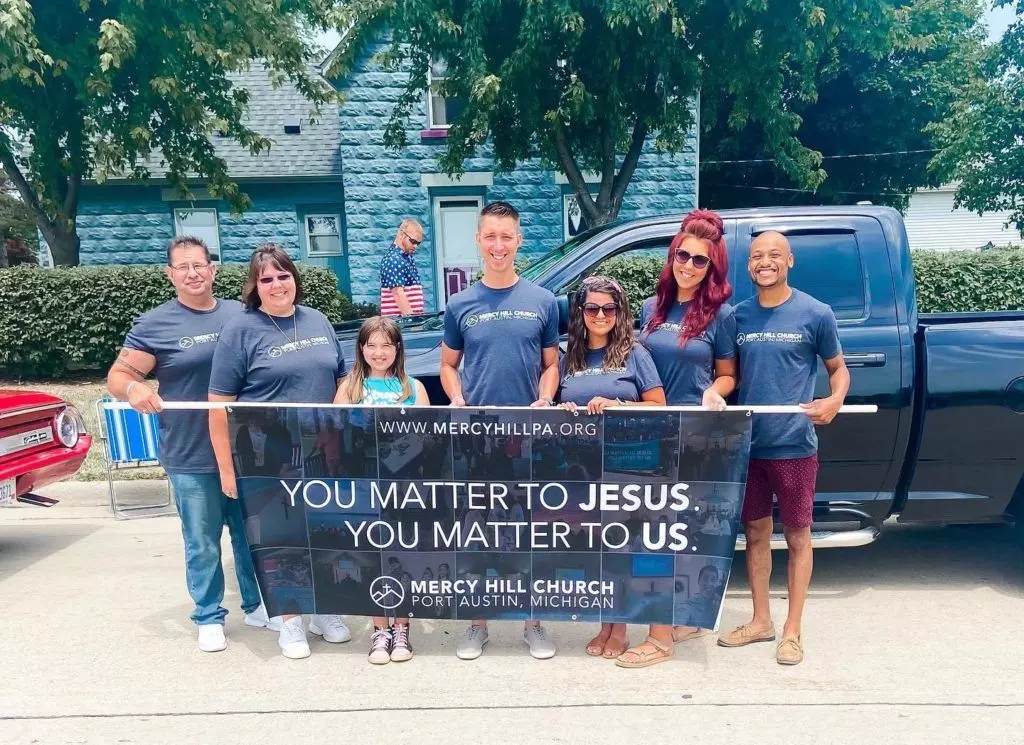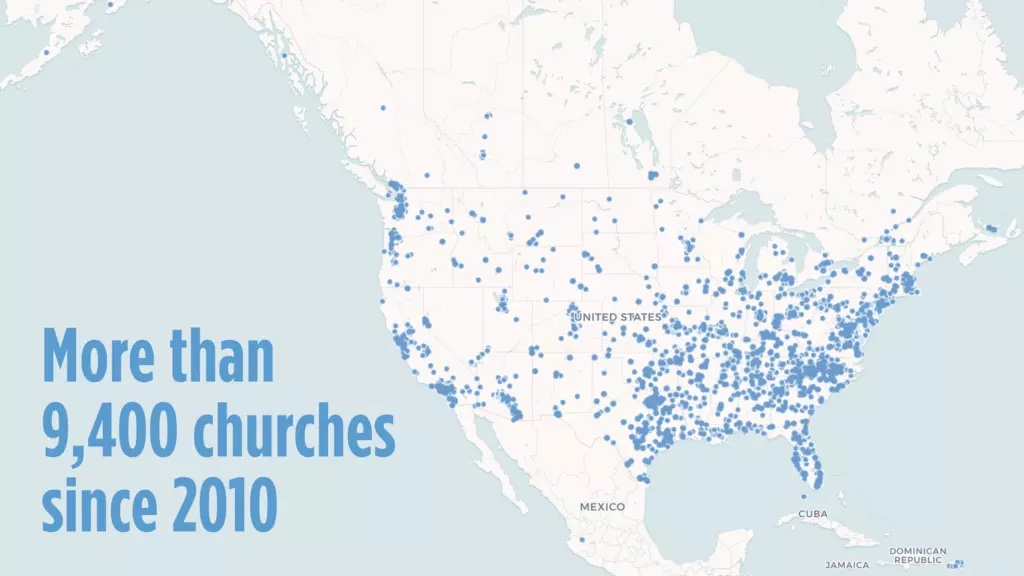PORT AUSTIN, Mich. (BP) – It’s the only Baptist church in town. Church planter Michael Goforth considers it purely a work of the Lord that Mercy Hill Church is thriving where three previous congregations shut down.
When he and his bride Shannon sought a network to undergird their work in rural Michigan, the North American Mission Board’s Send Network caught their eye.
“We’re kind of up in the middle of nowhere, and so it just seems like we’re on an island sometimes and we can be forgotten,” Goforth told Baptist Press. “But through connecting with Send Network and Cooperative Program-supported churches, it has just been a blessing to really have a network that’s behind us, encourages us and helps us, specifically financially.”

Will Browning’s path to Send Network was born of a calling away from his life’s work as a pastor and prolific church planter in the greater Charleston, S.C., area. There, he planted Journey Church in 2007 and birthed nine others from the mother church by 2021. That’s when he was called to the greater Los Angeles, Calif., area to serve as the Send Network’s local chief strategist.
“What caused us to come out here was this constant confirmation from the Lord that He wanted us to lay down what probably was our ‘Isaac,’” Browning said, a reference to the biblical call of Abraham to sacrifice his son. “We really only wanted to be the leaders of the church. And I had actually given my elders a 25-year vision, basically saying, ‘I’m going to give you my life. I have no desire to do anything else.’
“Unfortunately when we put Isaac on the altar, we didn’t get a ram. (God) said, ‘No, I really want you to go.’”
Browning has served one-and-a-half years as the Send City missionary for a multi-county greater Los Angeles area of nearly 18 million residents. In 2022, he shepherded church planters to plant 19 new churches and has assessed 30 church planters to start new works in 2023.
In the territory including Los Angeles, Orange, Riverside, San Bernardino and a small portion of Ventura counties, 73 church planters are currently enrolled in Send Network’s church-planting system that provides varying levels of financial support over a five-year period.

The wide range of the Cooperative Program’s impact has become clear to Browning since he joined Send Network.
“As a pastor, I feel like I didn’t quite understand how far the Cooperative Program was going,” he said, “when it came to helping church planters, doing overseas missions. I think I had a good view of what it did for seminarians, because I benefitted from that, attending two of our Southern Baptist schools.
“Now that I’ve been doing this, I’m very impressed with what is happening. And here’s the statistic that I don’t think most people know. We perceive that by 2030, one third of the Southern Baptist Convention’s churches will be church plants that have been planted since 2011.”
Nationwide, Southern Baptists started 1,018 new congregations in 2021, NAMB reported at the 2022 SBC Annual Meeting in Anaheim, including 600 new church plants, 135 replants, 201 new affiliations and 82 new campuses. NAMB boasts a two-year survival rate for new churches at or above 80 percent.
As the largest Protestant convention of churches in the nation, more than 48,000 churches and 3,000 missions are Southern Baptist. Of those, 4,400 are participating Send Network churches that account for 18 percent of Southern Baptist baptisms, according to NAMB.net.

“What we’re trying to do is keep up with attrition levels and hopefully planting more churches than were closing,” Browning said. “Which we know churches start and churches die – the church of Ephesus, the church at Philippi, the church at Colossae. They were planted for the Kingdom of God, not for the sake of the church. And that means that every church, even the church’s life cycle, is for its Kingdom expansion more than anything else.”
Specifically in the Los Angeles area, Browning said, as churches close their doors it’s important to “place a strong Southern Baptist church planter, or a strong SBC replanter into these locations, because the city of Los Angeles isn’t going to give us anymore tax-less land.”
In Port Austin, Mich., Goforth began as a mission of the Independent Baptist church his father pastors, Calvary Baptist Church in nearby Caseville.
Goforth began looking for a network of churches to affiliate with in the early days of the COVID-19 pandemic, and reached out to Send Network. He appreciates the opportunity to establish relationships, but also benefits financially for the church that has 25 covenant members and averages 50 in attendance.
“We came into the Send Network a little bit later,” Goforth said. “Our finances were doing OK for the most part. But what the Cooperative Program enabled us to do was, it enabled me to get a little part-time help.”
He hired a part-time worship leader, partially funded his graduate studies at Southern Baptist Theological Seminary, supported community outreaches and began to take healthy steps toward financial independence when his five-year term as a Send Network church planter ends. The church has drawn additional volunteers, and the congregation will elect a lay elder and three deacons Nov. 6.

“The coolest part about our church,” Goforth said, “is that three other churches have had to close their doors in our location, in our actual building. When I examined what was the actual cause of this, what I discovered was in a town of 700 year-round, it’s pretty discouraging.
“And you can compare yourself to larger ministries in larger areas, and just get discouraged.”
Often the churches, which were from different denominational backgrounds, would fold after the leadership moved away. Goforth has himself gotten ministry offers that appear on paper to have better financial terms, he said, but he is committed to the work in Port Austin.
“Part of our biggest benefit of doing the Cooperative Program,” Goforth said, “is connecting our little church to the largest Protestant denomination basically in the world.”
He appreciates the sustainability and stability Send Network affords.
“I’ve told our people from day one, this is almost, it seems like, the enemy’s territory,” he said. “It’s a difficult place to start. And so if anything good is going to happen here, all the glory goes to God.
“It’s not going to be our strategies or our programs or skillsets, it’s all going to be a miracle of God. And here we are looking at it and just saying, ‘Wow, God did this.”
Published October 21, 2022
